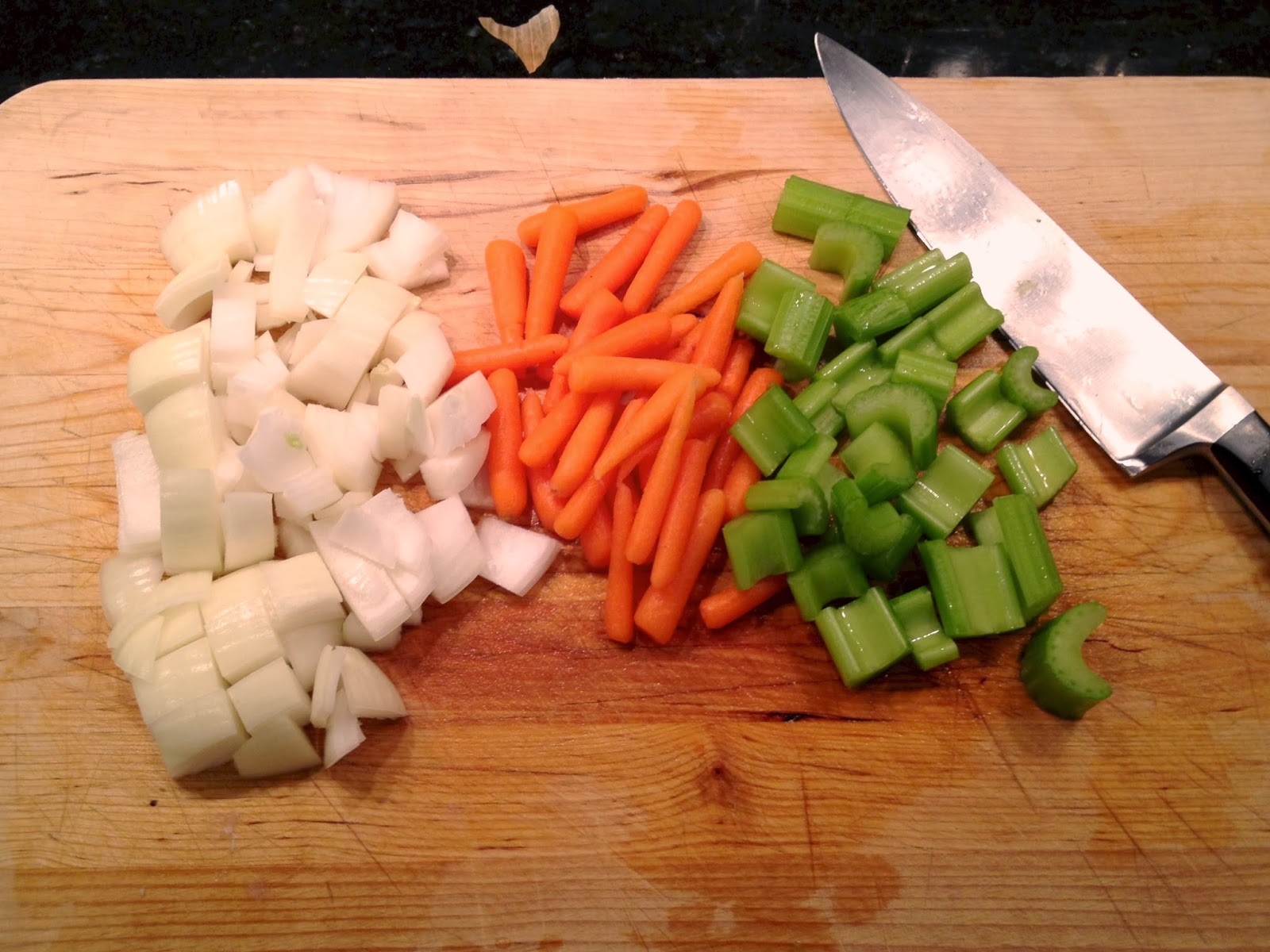On a cold and dreary day, when you have plenty of time to go low and slow, there is nothing better than a braise. Slow cooked stew, cassoulet, carbonnade, or pot roast go hand in hand with short days and damp and cold weather. And as we are in the middle of such a weather system, Sunday seemed like a good day to consider this time-tested technique.
So as I was sitting in the kitchen and playing on the internet to get inspired and to determine the dish of choice, I stumbled upon two words that scream moist, tender, delicious: Osso Buco. Osso Buco is a dish preparation rather than a cut of meat, but the veal shank from which it is made is often confused by this name.
It ain't an easy cut of meat to find. I went to three stores including two Whole Foods before I found this rare cut. When I found it, I was stunned at the price, nearly $18/pound, or almost $60 for the family. Certainly more a treat than a once a week spurge.
The process
While the low and slow techniques require time, most of that is in the oven and not in prep. Most dishes follow the simple steps of 1) sear meat; 2) saute vegetables/mirepoix; 3) deglaze pan with liquid (water, wine, stock); 4) re-introduce the meat to the liquid; 5) cover and put in the oven set at between 275 and 300 degrees until the meat is fork-tender.
So here is what we did.
First, we tied each shank around the equator with cotton string. This not only helps to keep the shape of each piece during the sear, but also when served the meat is so tender it may fall off the bone and for presentation purposes that would be sacrelidge. See the video, below, that shows how we easily tie this otherwise slippery cut.
Then it is to the sear, which we did in a heavy-duty aluminum 12-inch non-stick pan.
A cast iron pan would work just as well. The trick here is to preheat the pan, salt each side liberally, and not skimp on the oil. The oil conducts the heat to the meat's surface. Given the irregularities of the surface of the meat, the oil acts as a bridge between the heat of the pan and the meat ensuring that the surface is uniformly seared.
 |
| A Perfect Sear |
The meat is removed after searing and in my case I placed them in a large baking dish which would eventually become my braising vessel. Everytime you sear meat, there is a side that looks better than the other, the money side. Make sure this side is facing up in the final braising vessel. Eating with your eyes....
Mirepoix
Now on to the vegetables. What is mirepoix? It is simply a French name for three flavor-enhancing ingredients: onion, carrots, celery. Traditionally, the ratio of each is two parts onion to one part each of carrots and celery. This combo is sometimes known as the trinity, although this culinary phrase is more commonly associated with Cajun cooking, where green sweet peppers are substituted for the carrots.
I like a fine dice with this dish, and having the horsepower of a Cuisinart helps make short work of the veggies. I first rough cut them to allow for more even processing in the machine.
A few pulses later and we have a very fine dice of these veggies.
Now to the pan. The flavor of our sear has left a ghost of itself in the pan in the form of fond, or the brown bits left behind.
The veggies go into this "dirty" pan, and the moisture they release loosens this flavor that will now be incorporated into the final dish. We add some olive oil to the pan, and toss in our vegetables. These are sauteed with a little salt over medium heat for about five minutes, until the moisture is released and the onions are translucent. The final vegetable step is to press a few cloves of garlic into the saute and cook for about a minute.
De-glaze
To ensure that all the fond has been incorporated, and to add moisture to the sauce, (with the heat on) we add about one cup of crushed tomato and about one cup of white wine (we used pinot grigio), and bring the whole sauce to a simmer. Give it a taste to make sure it is properly seasoned with salt, and your braising sauce is complete.
The braise
We pour the sauce over the veal shanks, making sure that it surrounds the meat. IT WILL NOT COVER IT COMPLETELY. The meat will release its own moisture during the braise, both flavoring the sauce and increasing the fluidity of the braising liquid. We are not trying to drown these suckers.
Cover and put into a 300 degree oven. I have found that this dish takes about 90 minutes to become fork tender. At least check it after 90 minutes and hit it for another 30 if it's not perfect.
Mashed potatoes make an excellent side for this meal (and a crusty loaf of bread). Here is the plated finished dish:
Marrow
That bone has some tasty marrow in it. Eat it plain or spread over a piece of bread. One of life's true delicacies.
This meal tastes best with.....
 |
| A Fire |
Jeff.








No comments:
Post a Comment